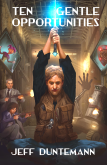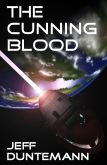Colds are like…well, you know what colds are like. Right now, everybody has one. I’ve been climbing out of this one now for about six days, and the top is not yet in sight. At least my flu shot worked, or I could have been in lots worse shape. If I’ve been quiet, that’s most of it.
But something remarkable happened yesterday that still has a lot of people scratching their heads. Michael Covington and several other people alerted me to the fact that Adobe had opened a download link to an installable instance of Creative Suite 2 that didn’t require activation. Rumors were thronging like Illinois mosquitoes that Adobe was just turning it loose. This is outside of type for them, let’s say.
The truth is subtler: Adobe is shutting off CS2’s activation servers, and once it does, people who have legitimate licenses to CS2 will not be able to reinstall it after a hard disk crash or whatever. So they’re providing an activation-free instance to those customers.
Why, then, did they put the download links to the installer files right out where anyone could see them? The links have been live for several days and were still live this morning, though the server has been choked here and there by activity that suggests more than just CS2 atavists clicking on the links. One would expect at very least a requirement for users to log into their Adobe accounts to get the install suite, but not so. Any code monkey could suggest four or five other ways to do it that would not present all of CS2 on a platter to the whole world.
Adobe insists that they’re not giving CS2 to everybody. So what’s really going on here? I’ll hazard a guess: They’re afraid of the Gimp, and to a lesser extent, Scribus. I think they’ve been afraid of both programs (and a scattering of others) for a long time. At some point, a bean counter probably did some spreadsheeting and realized that activation support on a long-tail product isn’t worth what it costs, and told the techies to shut it off and send the phone reps home.
Faced with that decision, somebody there may have gotten clever enough to realize that people were leaving the CS plantation for cheaper realms. The Gimp is good enough for most Photoshoppish work, according to people I respect, and if I didn’t already own InDesign 2.0, I’d probably be laying out books in Scribus. I think Adobe may be quietly trying to get more people hooked on the CS product, which is a huge revenue-generator for them. Photoshop is probably the most pirated non-OS in software history, and I wonder if they’re just making CS2 easier to pirate and looking the other way to pull a little pressure off CS6, while allowing the curious to give Creative Suite a go. There are legal reasons why they won’t admit to a strategy like that. Furthermore, as many have said, never attribute to cleverness what is better explained by incompetence. It may just be a booboo. If it is, it’s one of the longest-lived booboos of its sort I’ve ever seen.
I won’t post the link here, out of respect for Adobe’s copyrights. Trust me, you won’t have to flatten your nose to find it. I have only one more point to make: I’d like to buy that software. Yes indeed: Adobe, I’ll give you money! I won’t pay several grand for CS6. But I’ll pay a couple hundred for CS2. Alas, the product is not for sale. So what could be a revenue generator for Adobe is just another gift to the pirates, with people like me who’d like to remain legal looking on enviously.
I respect their copyrights. But still. Dumbasses!











